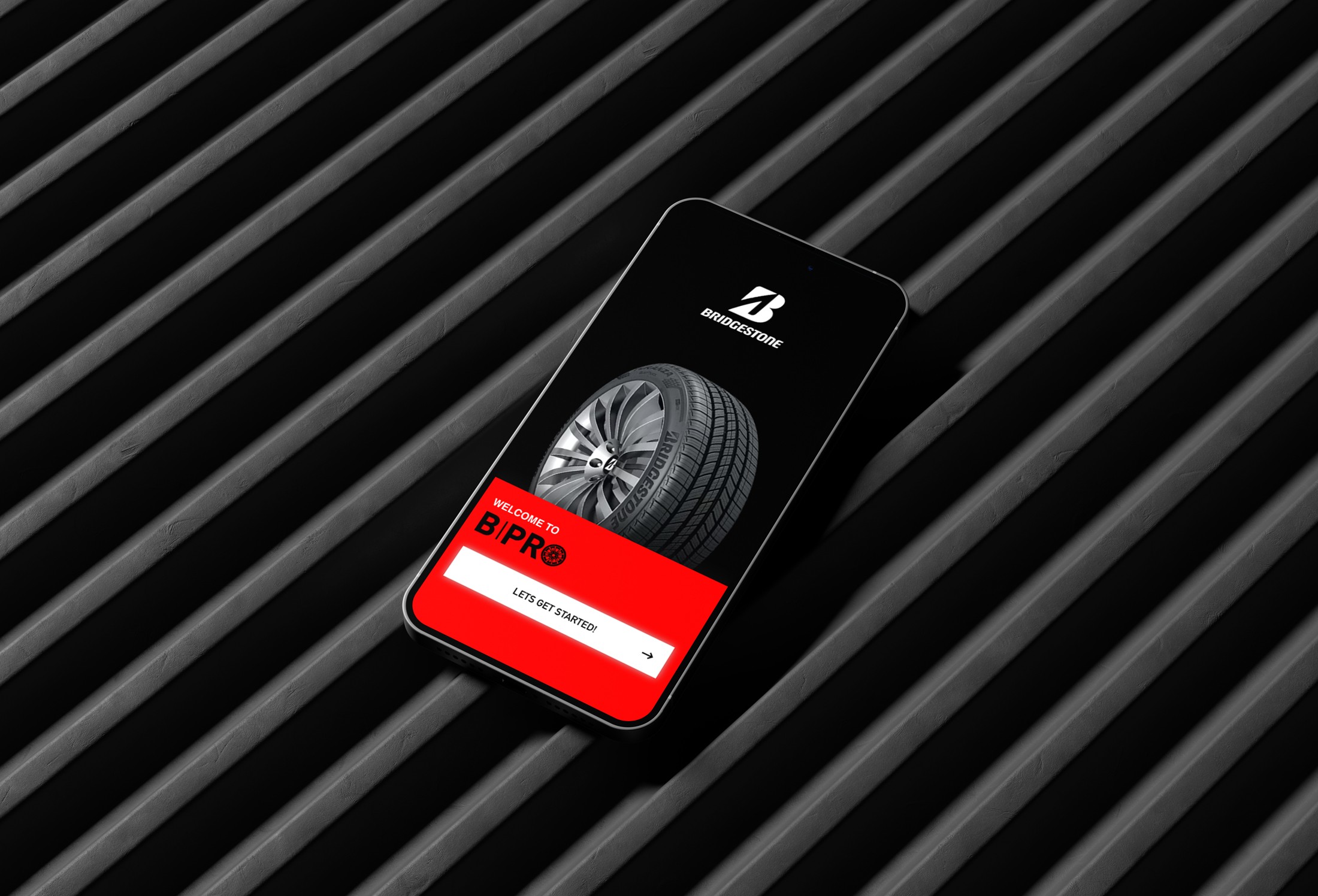The app provides real-time access to essential resources such as a product finder, mileage estimators, technical databooks, and a tire damage library. With features that facilitate instant communication, data sharing, and sales performance evaluations.
BPRO ensures that users are equipped with the latest market intelligence and product information, enabling them to deliver consistent results and maintain alignment with Bridgestone’s global strategy.
Introduction
BPRO Mobile is a professional sales tool developed for Bridgestone, designed to help sales representatives efficiently market and sell tires to wholesalers and distributors. The app provides a comprehensive database of various tire models, including specifications, sizes, and compatibility with different car brands.
Initially built as a Kotlin-based Android app, the product needed an upgrade to a cross-platform Flutter application to improve accessibility, performance, and user experience.
My role in this project was to lead the UX design efforts by enhancing usability, streamlining workflows, and ensuring a seamless transition from the legacy system to a more intuitive interface.
Problem Statement
The original BPRO Mobile app had several UX challenges that impacted sales efficiency:
Difficult navigation: Sales reps struggled to quickly find tire specifications and compatibility.
Inefficient search functionality: Finding the right tire model for a specific vehicle took too long.
Limited accessibility: The app was Android-only, restricting its adoption among Apple users.
Inconsistent UI: The interface lacked a clear visual hierarchy, making interactions unintuitive.
To address these problems, the redesign aimed to simplify navigation, enhance search efficiency, and create a seamless multi-platform experience.
Research & Insights
User Research & Interviews
We conducted user interviews with Bridgestone sales representatives and wholesalers to understand their pain points and workflows. Key findings included:
Speed is critical: Sales reps needed to access product information within seconds while pitching to clients.
Search must be intuitive: Users wanted smart filters and search-by-vehicle model functionality.
Offline access is important: Many sales reps operate in areas with weak internet connectivity.
Competitive Analysis
We analyzed similar industry tools, identifying best practices in:
Smart filtering and categorization to streamline product searches.
Quick comparison features to help sales reps present options effectively.
Minimalist UI approaches to enhance usability in fast-paced sales environments.
Ideation & Design Strategy
With the research insights in mind, we focused on these UX improvements:
A revamped search experience with AI-powered recommendations.
A structured product catalog for quick access to specifications.
Offline mode implementation for uninterrupted sales presentations.
A cross-platform UI system using Flutter’s Material & Cupertino components.
Wireframes & Prototyping
We created low-fidelity wireframes to validate core functionalities before moving into high-fidelity designs. These prototypes were tested with real users, and we iterated based on feedback.
Design Process & Solutions
1. Enhanced Search & Filtering
Before: Sales reps had to manually browse a long list of products. After: We implemented a smart search feature with filters by vehicle make, model, tire size, and type, reducing search time by 50%.
2. Product Comparison Feature
Introduced a side-by-side comparison tool that allows sales reps to present different tire options to customers efficiently.
Highlighted key specifications visually with icons and color-coded performance indicators.
3. High-Contrast & Sales-Oriented UI
Given that sales reps often present products in different lighting conditions, we introduced:
A high-contrast UI for better readability in bright environments.
A clean, professional design to make tire specifications easy to scan.
Quick action buttons for fast access to pricing, availability, and promotions.
4. Offline Functionality
To address connectivity issues, we developed:
A local data caching system for offline access to product catalogs.
Auto-syncing capabilities that update inventory and specifications when the connection is restored.
5. Cross-Platform Consistency
With Flutter, we ensured:
Seamless experience across iOS & Android.
Adaptive UI elements based on platform guidelines.
Improved performance with reduced app load times.
Testing & Iterations
We conducted usability tests with actual sales representatives in the field. The feedback led to:
Faster access to tire recommendations based on vehicle models.
A simplified comparison interface for sales pitches.
Refined error handling with clear, actionable messages.
Results & Impact
Post-launch analytics and user feedback showed significant improvements:
40% reduction in product search time.
35% increase in successful sales pitches due to improved product presentation tools.
4.8-star average rating on app stores from sales representatives.
Expanded adoption among iOS users, increasing accessibility.
Reflections & Learnings
What Worked Well?
Research-driven design led to a faster, more intuitive sales tool.
Cross-platform development expanded accessibility.
Iterative testing ensured a polished user experience.
Challenges Faced
Balancing detailed product specs vs. a clutter-free UI.
Designing for offline-first sales scenarios required additional development effort.
Ensuring search algorithms were fast and accurate.
Next Steps
Introducing AI-driven tire recommendations based on user preferences and regional trends.
Adding a real-time stock availability checker.
Enhancing interactive sales presentations with AR-based tire previews.
Conclusion
The BPRO Mobile UX redesign successfully transformed the app into a faster, more intuitive, and sales-driven solution for Bridgestone’s sales team. By leveraging user-centered design, cross-platform technology, and real-world testing, we ensured that the new app streamlined the sales process and enhanced the customer experience.





